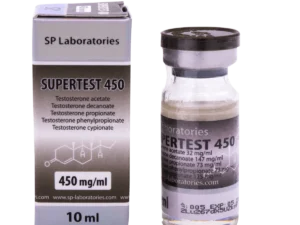Diet for Cutting and Working on Relief
Welcome to this comprehensive guide on dieting for cutting and achieving a defined, sculpted physique. Whether you are a bodybuilder, athlete, or simply someone looking to shed excess body fat and reveal a toned physique, understanding the principles of a cutting diet is essential.
A cutting diet is a strategic approach to nutrition that focuses on reducing body fat while preserving lean muscle mass. It involves creating a calorie deficit by consuming fewer calories than your body needs, which prompts it to tap into stored fat for energy. However, it is crucial to approach cutting diets with caution and prioritize maintaining muscle mass, as losing muscle can hinder your progress and impact overall strength and performance.
In this article, we will explore the key components of an effective cutting diet and provide practical recommendations to help you achieve your desired level of definition and muscle separation. We will cover the importance of macronutrients, meal timing, supplementation, and other factors that contribute to successful cutting. By following these guidelines, you can optimize fat loss while preserving muscle and achieving the desired relief.
Before embarking on a cutting diet, it is crucial to consult with a healthcare professional or a registered dietitian to ensure it aligns with your individual needs and goals. Additionally, keep in mind that diet alone is not enough to achieve optimal results. Regular exercise, including both resistance training and cardiovascular activities, is essential to maximize fat loss and maintain muscle mass.
Now, let’s delve into the main principles of a cutting diet and discover how you can effectively work towards achieving the desired relief and definition.
The Principles of a Cutting Diet
When it comes to a cutting diet, the primary goal is to create a calorie deficit while still providing your body with the necessary nutrients for optimal functioning. Here are the key principles to consider:
1. Caloric Deficit
Achieving a calorie deficit is crucial for fat loss during a cutting phase. To determine your caloric needs, calculate your maintenance calories and aim to consume around 500-700 calories less per day. This gradual deficit allows for sustainable fat loss while minimizing muscle loss.
2. Macronutrient Balance
Proper macronutrient distribution is vital for maintaining muscle mass and supporting fat loss. Focus on consuming adequate protein to preserve muscle and promote satiety. Aim for 1-1.2 grams of protein per pound of body weight. Include healthy fats for hormonal balance and essential vitamins and minerals. Fill the remaining calories with complex carbohydrates for energy.
3. Protein Intake
Protein is the cornerstone of a cutting diet. It helps preserve lean muscle mass, aids in recovery, and promotes satiety. Include lean sources of protein such as chicken breast, turkey, fish, tofu, and low-fat dairy products in your meals. Distribute protein intake evenly throughout the day to support muscle protein synthesis.
4. Meal Timing and Frequency
Meal timing and frequency can impact energy levels, metabolism, and muscle preservation. Consider consuming smaller, frequent meals to maintain stable blood sugar levels and prevent excessive hunger. Pre- and post-workout nutrition is crucial to fuel your workouts and support recovery.
5. Hydration
Staying hydrated is essential for overall health and optimal body composition. Adequate water intake aids digestion, regulates body temperature, and supports metabolism. Aim to consume at least 8-10 glasses of water per day and adjust based on activity level and individual needs.
Working on Relief
While cutting, it’s important to focus not only on losing body fat but also on enhancing muscle definition and achieving relief. Here are some strategies to help you achieve that:
1. Resistance Training
Incorporate resistance training into your routine to maintain and build muscle mass. Focus on compound exercises like squats, deadlifts, bench presses, and rows, which target multiple muscle groups simultaneously. Aim for a combination of heavy lifting and higher reps to stimulate muscle growth and enhance definition.
2. Cardiovascular Exercise
In addition to resistance training, cardiovascular exercise plays a crucial role in burning calories and improving cardiovascular health. Incorporate moderate-intensity cardio sessions, such as brisk walking or cycling, for 30-45 minutes several times per week to support fat loss and enhance overall conditioning.
3. Mindful Eating
Practice mindful eating to promote a healthy relationship with food and prevent overeating. Pay attention to hunger and fullness cues, eat slowly, and savor each bite. Avoid distractions while eating, such as television or electronic devices, to stay present and make conscious food choices.
4. Rest and Recovery
Allowing your body adequate rest and recovery is crucial for muscle growth and overall progress. Aim for 7-8 hours of quality sleep each night and incorporate rest days into your training schedule. This allows your muscles to repair and adapt, leading to improved definition and relief.
Conclusion
Achieving a defined, sculpted physique through cutting and working on relief requires a strategic approach to nutrition and exercise. By following a cutting diet that includes a caloric deficit, proper macronutrient balance, and adequate protein intake, you can optimize fat loss while preserving muscle mass. Additionally, incorporating resistance training, cardiovascular exercise, and practicing mindful eating will help you achieve the desired relief and enhance muscle definition. Remember to consult with a healthcare professional or registered dietitian before making any significant changes to your diet or exercise routine.
Practical Recommendations for Cutting and Working on Relief
1. Plan and Track Your Meals
Creating a meal plan and tracking your food intake can help you stay on track with your cutting goals. Plan your meals in advance, ensuring they are balanced and meet your macronutrient needs. Use a food diary or mobile app to track your daily calorie intake and monitor your progress.
2. Prioritize Whole, Nutrient-Dense Foods
Focus on consuming whole, nutrient-dense foods that provide essential vitamins, minerals, and fiber. Opt for lean sources of protein, such as chicken, turkey, fish, and plant-based options like beans and lentils. Include a variety of colorful fruits and vegetables, whole grains, and healthy fats like avocados, nuts, and olive oil.
3. Be Mindful of Portion Sizes
Pay attention to portion sizes to avoid overeating and ensure you are in a calorie deficit. Use measuring cups, a food scale, or visual cues to estimate appropriate portion sizes. Avoid mindless snacking and be aware of serving sizes when dining out or ordering takeout.
4. Incorporate High-Intensity Interval Training (HIIT)
Include HIIT workouts in your exercise routine to maximize calorie burn and boost your metabolism. HIIT involves short bursts of intense exercise followed by periods of active recovery. This type of training can help you burn more calories in a shorter amount of time and improve cardiovascular fitness.
5. Stay Consistent and Patient
Consistency is key when it comes to achieving cutting and relief goals. Stay committed to your nutrition plan and exercise routine, even when progress might seem slow. Remember that sustainable results take time, and patience is essential. Stay motivated by tracking your progress and celebrating small victories along the way.
6. Seek Professional Guidance
If you are unsure about the best approach for your cutting and relief goals, consider seeking guidance from a registered dietitian or certified fitness professional. They can provide personalized recommendations based on your individual needs and help you navigate any challenges or plateaus you may encounter.
7. Listen to Your Body
Pay attention to your body’s signals and adjust your approach accordingly. If you are feeling excessively fatigued or experiencing muscle loss, it may be a sign that your calorie deficit is too aggressive. Be flexible and make adjustments as needed to ensure you are supporting your overall health and well-being.
8. Stay Hydrated and Minimize Alcohol Intake
Hydration is crucial for overall health and performance. Drink plenty of water throughout the day to support digestion, metabolism, and muscle function. Minimize alcohol intake, as it can hinder fat loss and negatively impact recovery and performance.
By implementing these practical recommendations, you can optimize your cutting and relief journey, achieve your desired physique, and maintain a healthy lifestyle in the long run.






